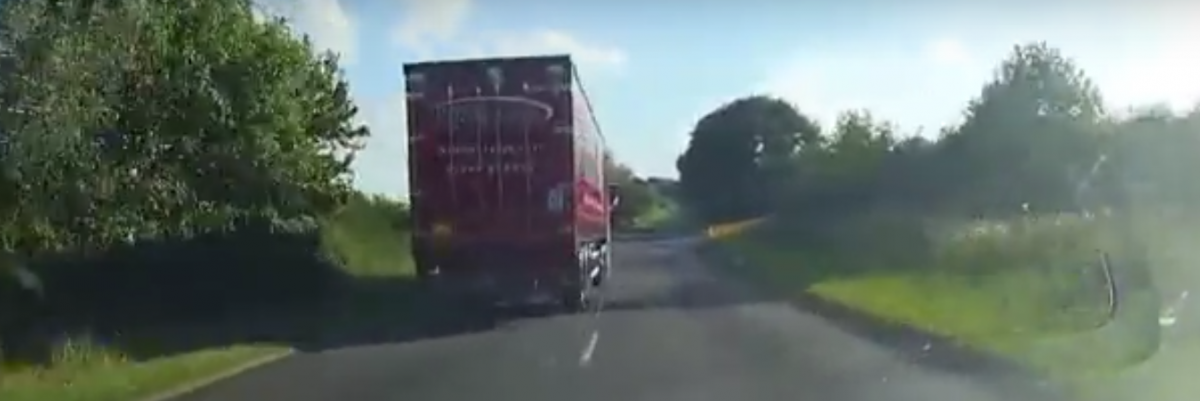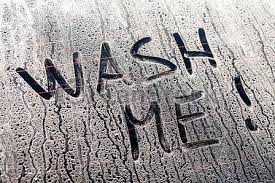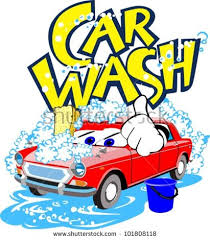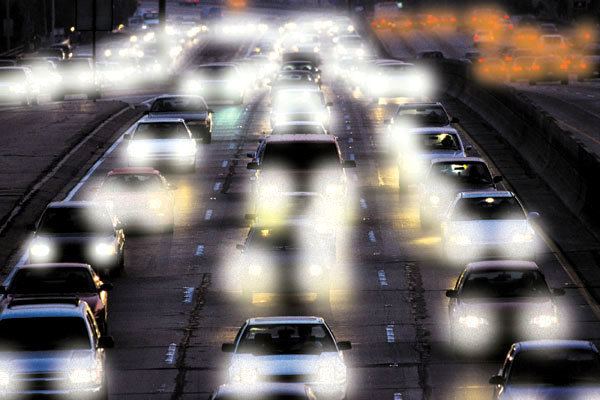R ainy Day Driving
ainy Day Driving
The wettest parts of the UK are concentrated in mountainous regions with observation sites in Snowdonia, the Lake District and the Scottish Highlands all receiving more than 4 metres of rainfall in a year.
Other rainy parts of the UK include:
-
North west England – especially the Lake District in Cumbria and western facing slopes of the Pennines.
-
Western and central Wales – particularly the mountainous Snowdonia region in the north.
-
South west England – mainly the higher elevation areas of Dartmoor, Exmoor and Bodmin Moor.
-
Parts of Northern Ireland.
For us in the Watnall weather station region, we are likely to get 20 to 25 days rain annually that is greater than 10mm, according to the weather records. There might be 130 to 140 days rain that is greater than 1mm. https://www.metoffice.gov.uk/public/weather/climate/gcrje93b8
So, in this country, it is going to be difficult to avoid those rainy days when driving.
Driving in heavy rain and flooding can be hazardous. Here are some useful hints and tips to help you prepare for a wet weather drive.
It is always advisable to consider before you set off whether your journey is essential. Of course, one has to get to work or drive the children to school and cannot really delay the time of travel.
First and foremost: Using the car lights correctly when the roads are wet will ensure you can see and be seen. When the rain does start to fall, you should turn the headlights on. Don’t just assume they already are – many cars’ instruments light up even when the headlights are turned off these days, which can be misleading. If your car has daytime running lights you still should switch the dipped headlights on, so vehicles behind you can see the red tail lights. Don’t use rear fog lights unless visibility is less than 100 yards and you cannot see any vehicles behind. Fog lights can mask the brake lights and dazzle drivers behind you
If your car has automatic headlamps, make sure these have activated – or override them manually by turning the headlamp switch to the dipped beam setting.
Slow down! It takes longer to stop or adjust in wet weather and it’s more difficult to see the road ahead/behind. The gap between vehicles should be at least doubled on wet roads, according to the Highway Code – Rule 126 – Stopping Distances. This is because tyres have less grip on the road. In wet weather the rain and spray from vehicles may make it difficult to see and be seen so the driver should keep well back from the vehicle in front. This will increase the ability to see and plan ahead.
Be aware of the dangers of spilt fuel that will make the surface very slippery. You should also try and avoid sudden moves that might unbalance the car, such as sharp steering or braking. Doing so increases the likelihood of your car skidding.
Driving too fast through standing water could lead to tyres losing contact with the road. If your steering suddenly feels light you could be aquaplaning. To regain grip, ease off the accelerator, do not brake and allow your speed to reduce until you gain full control of the steering again, while keeping the steering pointing in the direction of travel. (The surface water builds up under the tyre, lifting it away from the road surface. Once it loses contact with the Tarmac, you’re effectively ‘surfing’ along on top of the water, with little or no grip.)
Driving through surface water and floods
Puddles may be a couple of centimetres deep, but some can develop into deep potholes of water. There is no way of knowing until it may be too late, so avoid them if possible. Driving through these potholes could cause serious damage to your car not to mention cost an extortionate amount to repair.
Should you come across a flooded road, first think about taking another route. If not, then you need to identify how deep the flood is. If the standing water is more than six inches deep, avoid driving through it. The water is often deeper than it looks and may be moving quite fast. Your vehicle may be swept away or become stranded. Two feet of water will float your car. If you are familiar with the road, you may be able to judge the flood in relation to the kerb. Are there other vehicles similar to yours that are safely driving through? From this, make a judgement call as to whether it is safe to travel through or not.
If you are in the slightest doubt, then turn around and don’t go through the flood. Often modern saloon cars have the air intake in the wheel arch, which may be below the water level. If your engine should take in water, it will immediately hydro lock and the engine will stop.
If you have taken everything into consideration and decide to drive through the flood, be sure to do so slowly. The best approach is to press lightly on your clutch and add gentle pressure on your accelerator to increase your engine revs. Do so without increasing your speed, in a similar way to how you would undertake a hill start. This will prevent water from entering your exhaust. If you are in an automatic car, accelerate slightly but control the speed with your brakes. When you have passed the flood, test your brakes to make sure they are dry and working properly.
Avoid splashing pedestrians. If this is done accidentally, you could receive a fixed penalty and three points on your license for driving without due care and attention, or without reasonable consideration for other road users. If deliberately done, it could be a public order offence, a court appearance and a fine.
| Virus-free. www.avg.com |

 ery often people just want their transport arranged and don’t mind who drives as long as it’s not them! In which case it might be worth pre-arranging a cab or minibus – don’t leave it too late as these things are best booked and paid for in advance. Research shows that women are much better at this, so gentlemen take at leaf out of their book and plan ahead!
ery often people just want their transport arranged and don’t mind who drives as long as it’s not them! In which case it might be worth pre-arranging a cab or minibus – don’t leave it too late as these things are best booked and paid for in advance. Research shows that women are much better at this, so gentlemen take at leaf out of their book and plan ahead! Most of us travel at some stage over the festive period, and sharing the road with what can feel like the entire population can be stressful, as Chris Rea discovered.
Most of us travel at some stage over the festive period, and sharing the road with what can feel like the entire population can be stressful, as Chris Rea discovered. Packing the car can leave you fraught. Make a check list of everything you need and try to ensure there are no loose parcels that could turn into missiles in the event of having to brake in an emergency. Leave all your presents and electrical items out of sight. Don’t give the thieves something to be happy about this season! Carry an emergency pack with some food and drink, a fully charged mobile and basic tools such as an ice scraper, shovel and a high-visibility jacket.
Packing the car can leave you fraught. Make a check list of everything you need and try to ensure there are no loose parcels that could turn into missiles in the event of having to brake in an emergency. Leave all your presents and electrical items out of sight. Don’t give the thieves something to be happy about this season! Carry an emergency pack with some food and drink, a fully charged mobile and basic tools such as an ice scraper, shovel and a high-visibility jacket. If the festive party went on into the early hours of the day of travel, then make sure you are not over the limit ‘the morning after’. Don’t risk it! As a rough guide it takes the body one hour to rid itself of one unit of alcohol (a strong pint of lager or 250ml glass of wine may contain 3 units each). And the clock starts from when you finish drinking, not when you start!
If the festive party went on into the early hours of the day of travel, then make sure you are not over the limit ‘the morning after’. Don’t risk it! As a rough guide it takes the body one hour to rid itself of one unit of alcohol (a strong pint of lager or 250ml glass of wine may contain 3 units each). And the clock starts from when you finish drinking, not when you start!  The season of mists and sprinkling saltiness is now upon us.
The season of mists and sprinkling saltiness is now upon us.  So, you face two choices. If you really can’t stand the thought of getting a bucket and sponge out, a hand car wash near you is one of the best value things a fiver will buy these days; maybe a couple of quid more if you have an SUV. They often do an excellent and thorough job – wheels, door shuts, tyre shine and all. And, of course, there is always the local
So, you face two choices. If you really can’t stand the thought of getting a bucket and sponge out, a hand car wash near you is one of the best value things a fiver will buy these days; maybe a couple of quid more if you have an SUV. They often do an excellent and thorough job – wheels, door shuts, tyre shine and all. And, of course, there is always the local  Dirty windscreens make it even more difficult for drivers to see in the low sun. The heater is often on the de-mist setting, blowing traffic fumes, suspended oil and smoke onto the inside of the screen which quickly builds up a film of grime which is a major cause of glare. Clean the screen inside and out with glass cleaner at least once a week.
Dirty windscreens make it even more difficult for drivers to see in the low sun. The heater is often on the de-mist setting, blowing traffic fumes, suspended oil and smoke onto the inside of the screen which quickly builds up a film of grime which is a major cause of glare. Clean the screen inside and out with glass cleaner at least once a week. Use the sun visor or wear a baseball cap or wide brimmed hat. Just ensure you can still see the road ahead!
Use the sun visor or wear a baseball cap or wide brimmed hat. Just ensure you can still see the road ahead! If the sun is behind you, it’s in the eyes of drivers coming towards you – be aware that they might not see you or the road markings between you and them. Switching on the car’s dipped headlights will help oncoming drivers see your vehicle and judge speed and distance.
If the sun is behind you, it’s in the eyes of drivers coming towards you – be aware that they might not see you or the road markings between you and them. Switching on the car’s dipped headlights will help oncoming drivers see your vehicle and judge speed and distance. There are eye conditions, such as early cataract growth, where looking towards the sunlight gives much worse vision than when looking away from it. These drivers may well be able to drive quite legally, once advised by an optometrist, but should be aware of their condition and drive with extra care or even postpone a journey until light conditions are more favourable. Perhaps that advice would help us all.
There are eye conditions, such as early cataract growth, where looking towards the sunlight gives much worse vision than when looking away from it. These drivers may well be able to drive quite legally, once advised by an optometrist, but should be aware of their condition and drive with extra care or even postpone a journey until light conditions are more favourable. Perhaps that advice would help us all.